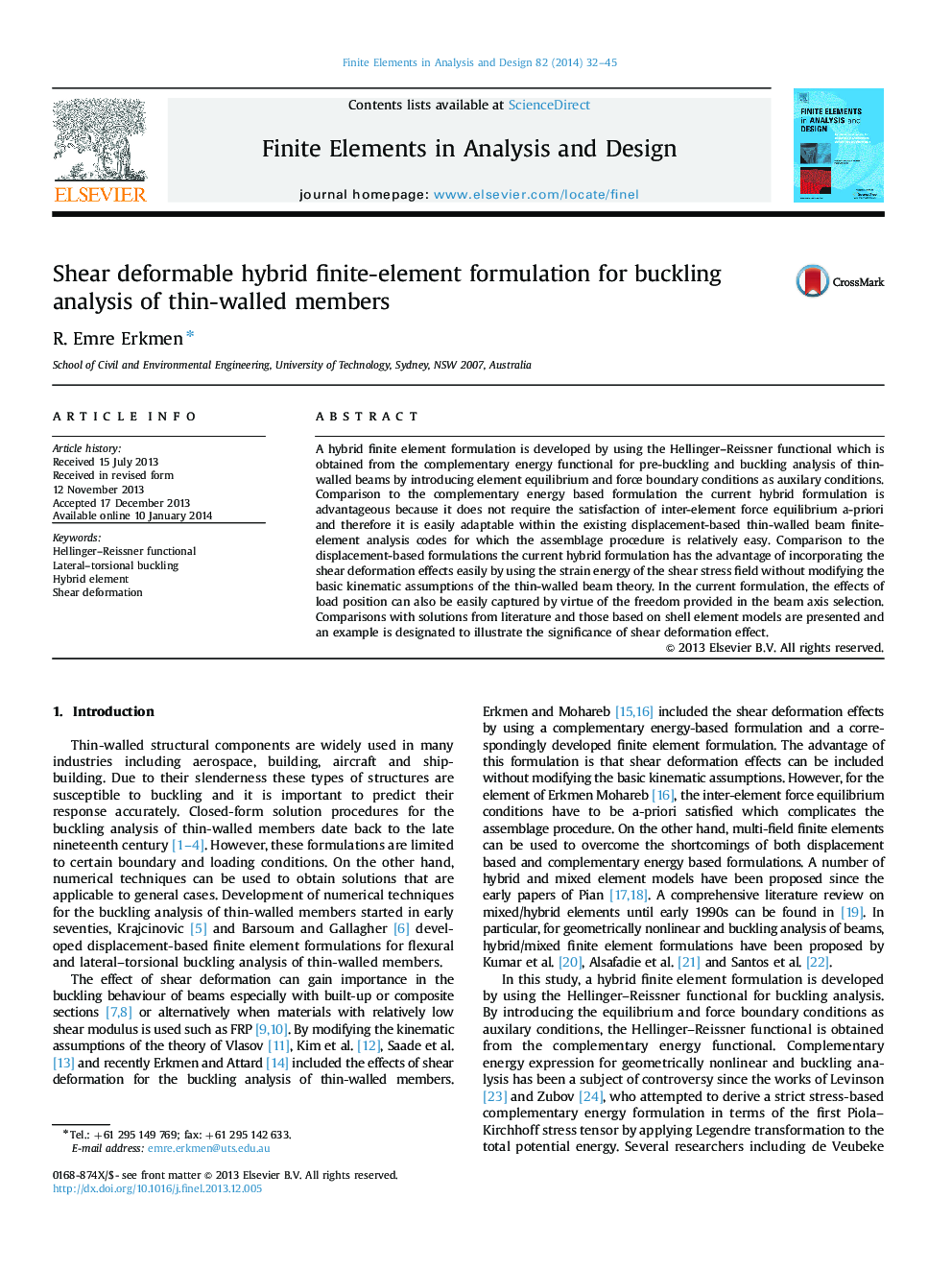| Article ID | Journal | Published Year | Pages | File Type |
|---|---|---|---|---|
| 514481 | Finite Elements in Analysis and Design | 2014 | 14 Pages |
•Hellinger–Reissner functionals for pre-buckling and buckling analysis are obtained from the complementary energy functional.•Current formulation is advantageous because it does not require a-priori satisfaction of the inter-element force equilibrium.•Comparison to the displacement-based formulations, the current formulation has the advantage of incorporating the shear deformation effects without modifying the kinematic assumptions.•The effects of load position can also be easily captured by virtue of the freedom provided in the beam axis selection.
A hybrid finite element formulation is developed by using the Hellinger–Reissner functional which is obtained from the complementary energy functional for pre-buckling and buckling analysis of thin-walled beams by introducing element equilibrium and force boundary conditions as auxilary conditions. Comparison to the complementary energy based formulation the current hybrid formulation is advantageous because it does not require the satisfaction of inter-element force equilibrium a-priori and therefore it is easily adaptable within the existing displacement-based thin-walled beam finite-element analysis codes for which the assemblage procedure is relatively easy. Comparison to the displacement-based formulations the current hybrid formulation has the advantage of incorporating the shear deformation effects easily by using the strain energy of the shear stress field without modifying the basic kinematic assumptions of the thin-walled beam theory. In the current formulation, the effects of load position can also be easily captured by virtue of the freedom provided in the beam axis selection. Comparisons with solutions from literature and those based on shell element models are presented and an example is designated to illustrate the significance of shear deformation effect.
